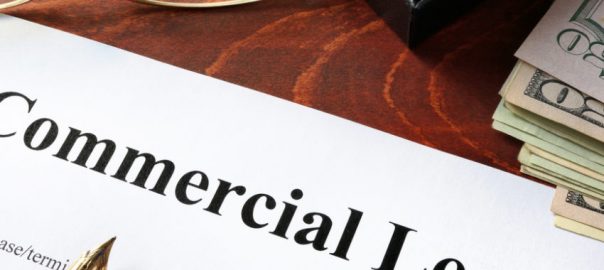The Definitive Guide and Analysis for Finding the Right Bar Prep Course for the First Time Taker
Since you have landed here, I am assuming that you have either successfully finished law school or will be graduating soon. Understanding the rigors you have endured, congratulations is certainly in order. But like me, after finishing law school, I am sure you are thinking “okay, I successfully jumped that hurdle, now I need to jump the next and most important one – passing the Bar.”
Taking the Bar exam is much different than taking an exam in law school. Putting aside the logistics, time constraints, and two day intensity; the Bar exam is put together by the state bar regulatory agencies in an attempt to test for whether a person would be a competent attorney. Thus, the exam is different in many ways as to what you have been exposed to.
For this reason alone, taking a Bar preparation course is critical. And note, if this is the first time you are taking the Bar exam, it is important that you choose a full service course which prepares you for all aspects of the exam including the multiple choice, essays and the performance exam.
For many of you, passing the Bar exam the first time is vital. For some, you already have a job lined up which would disappear if you didn’t pass the first time. Others may have had to take out substantial student loans which now, that you have graduated, will require repayment.
Either way, a Bar exam preparation course is essential. To further complicate matters, as I am sure you have heard, and as amply reported in publications like the Los Angeles Times and the ABA Journal, Bar exam pass rates have been on a steady decline for the last several years. To compound that problem, many states, like California, are refusing to lower their exam pass cut lines to raise the pass rates.
In other words, the state bar licensing agencies are refusing to grade the Bar exam on a curve, citing the need to preserve public protection. As a result, today’s Bar exams are just as difficult to pass as those given twenty years ago when I took mine. So then you might be wondering, “why are the Bar pass rates steadily decreasing, it is not as if today’s students are less intelligent than those from twenty years ago?”
You are correct, today’s students are just as intelligent, but there is something else going on. An analysis was done and the researchers found that the decline was not due to lower scores on the multiple choice portion of the exam (known as the MBE). It was determined that the lower bar pass rates were due to a higher failure rate on the essay questions.
It was found that because of societal changes (including that students today study in a different manner than in the past) and changes in the way many law schools are administering their classroom exams, many of today’s students taking the Bar are having difficulty following the call of an essay question; they are not spotting a sufficient number of issues in the fact patterns; they are having trouble applying the law to the facts and analyzing them; and their grammar and spelling is not up to par.
Unfortunately, the long standing traditional Bar preparation courses have not adapted their curriculums to compensate for this change. In the past, the MBE was considered the most difficult and tricky portion of the exam to pass. Consequently, the major emphasis, in the companies offering full service Bar review, focused on the techniques of mastering MBE.
These full service companies provided essay questions with model answers and had some discussion about the basic IRAC approach (Issue, Rule, Analysis, Conclusion, a cumbersome, outdated method not really suited to address today’s timed essay questions containing multiple issues and cross over subjects). The companies assumed the skills required to actually break down and analyze essay questions were learned within the law school curriculum. Basically, the methodology for these companies in preparation for essay exams was the old axiom, “practice makes perfect.”
Today, although the full service giants in the Bar prep industry like BarBri, Flemings, and Kaplan, and the smaller ones like Bar Max, AmeriBar, and Themis, continue to offer full service courses and dominate the market, their curriculums have remained the same for several years.
When choosing a Bar exam preparation course, remember that not all courses are alike. Most of the Bar review courses are not full service courses, as they focus on one particular aspect of the Bar (usually as a supplement). For example, courses their courses may only focus on the MBE portion or the essay portion or just the performance portion. Then there are companies which focus on a particular type of exam or jurisdiction, for example, a course focusing just on the California first year exam or the New York exam. Other companies are focused on those students who have previously failed the exam, and thus their approach with the second time takers is much different than if you are a first time taker.
If you are a first time taker, these limited courses will not fulfill all of your needs and should not be considered as your primary Bar preparation course. If you find that you need some supplementation at some point, then, of course, you should look at what they offer.
Because it is critical that as a first time taker you take a full service course, I will not be including those limited curriculum focused companies within the comparison below. The companies, that I know of, which have the limited focused curriculum include: Adapti Bar; Bar Graders; Bar Made Easy; PMBR; Bar Outlines; Bar Secrets; Bar Review Solutions; Bar Prep Hero; Smart Bar Prep; Omni Prep Patent; Internet Bar Exam Review; My Bar Prep; Pass the Bar; Pieper Bar Review; Marino Bar Review; Bar Exam Doctor; Supreme Bar Review; Skillman Method; and The Writing Edge.
In addition to these limited focus companies, there are several companies which provide Bar review in a tutorial setting, whether one-on-one or in small groups, but mostly face-to-face. These are usually regional companies, requiring your attendance and have very limited enrollment. In addition, because they are so hands-on personal tutorial courses, they mainly cater to those Bar takers who have previously failed the exam.
Because of the small capacity, the regional considerations and that the course curriculums often focus on the student who has already taken the Bar exam, I am of the opinion that these companies should also not be considered by the first time taker (but of course, that is a personal choice). Thus, I will not include the companies that focus on a tutorial format in the comparison below. The companies, I know of, in this category include: Bar None Review; Bar Plus Review; Bar Review; Bar Winners; Law Tutorial; Law Tutors; Open Book; Southwest Bar Review; The Bar Coach; and The Bar Code.
That leaves the full service companies for your review and comparison. The full service companies, which I am currently aware of, include: Side Bar; BarBri; Bar Max; Kaplan; Themis; Flemings; and AmeriBar.
Before we begin the comparison, I would like to say a word about published Bar pass rates and published pricing for these individual companies. Of the seven full service Bar Prep companies, three (Themis, Bar Max, and Flemings) publish Bar pass rates. BarBri does not officially publish Bar pass rates, however it has been reported in the press that their sales people verbally tout an 80 percent pass rate.
The publication of a Bar pass rate, by a Bar prep company, has always left me in a quandary. How precisely do these companies establish a protocol to accurately assess the percentage of those people who have taken their course and then passed the Bar exam?
It seems to me to be enigmatic to make such a determination and then publish this as a selling point. The individual state bars administering the exams certainly do not collect any data concerning whether a person took a Bar prep course, more or less a particular brand. In addition, many states do not publish the names of those people who passed the exam.
Thus, the official arbiters of the exams certainly are not the source of this information for the Bar prep companies to publish. There can be only one way to establish this kind of information which would be unreliable and thus produce inaccurate results. That would be after the six months of taking the exam and then receiving their results, each individual student would have to contact the Bar prep company they used and tell them whether they passed or failed the exam.
For a pass rate to be reliable and accurate, 100 percent of the those who purchased the Bar prep course would have to voluntarily respond to the company and be truthful about whether they passed or failed. If even a fraction of those (let us say 20 percent) did not respond to the company, the results would be far from accurate and thus misleading to publish.
Someone once told me that at least one of the companies establish their pass rate based upon those who took the exam, failed and then contacted the company requesting to retake the course for free. Here again, this can never be an accurate portrayal of a pass rate because often, those who fail on their first try decide that the Bar prep course they took was not good enough and they then engage a different company to prepare them for the second go around (and as mentioned above, there are several companies only focused on that market niche).
Therefore, in my opinion, any published Bar pass rate proffered by a Bar prep company is deceptive. In using this as a criteria in your evaluation of the companies below, consider this; there is a Civil Jury Instruction in almost every State which basically says: “If you decide that a witness did not tell the truth about something important, you may choose not to believe anything that witness said in her other testimony.” There is much wisdom behind that jury instruction, and based upon that criteria, I personally cannot recommend any company which publishes Bar pass rates.
If you agree with my opinion concerning published pass rates, that would eliminate Themis, Bar Max, and Flemings from serious consideration (and if the BarBri sales representatives are also instructed to tout these pass rates, they should be eliminated as well).
That leaves four full service companies (Side Bar, BarBri, Kaplan, and AmeriBar) to evaluate and compare. However, to be fair, all seven companies will be included in the comparison below.
Now about published pricing. Here again, not all companies are alike and have different and sometimes complex pricing structures. For example, Flemings has different tiers of pricing: Short Term is more than $2,000, Long Term is more than $3,000 and Ultimate is in excess of $6,000. Each tier has a different level of course and preparation materials provided. AmeriBar has a similar tiered pricing structure.
I question this kind of pricing, because how is a first time Bar exam taker going to know what level or tier is right for them in order to pass the exam? Frankly, if the first time taker actually knew the answer to that question, they would be so clairvoyant and knowledgeable that they would not need a Bar prep course at all.
On the other hand, other companies, like Side Bar, provide 100 percent of all course and preparation materials, that would be required to pass the Bar, for a single price.
Thus, it is difficult and confusing to attempt to compare a company that provides tiered pricing, versus an all inclusive fee company, as it would be trying to compare apples and oranges. Thus, I suggest that once you have settled upon two companies to choose from, and one of those companies has tiered pricing, that you then delve into those pricing tiers and attempt to make a subjective evaluation for yourself.
However, if you are like me, and simply eliminate from your consideration those companies who engage in publishing Bar pass rates and those that have tiered pricing, that leaves three full service Bar prep companies for your review which are as follows: Side Bar, BarBri, and Kaplan.
For your comparison, these are listed first and then the other four full service companies will follow. A good place to start the comparison is the newbie on the block – Side Bar.
Side Bar
This full service Bar prep company was recently established to address the declining Bar pass rates. With their system, the student is not left on his/her own to figure out what to do and where to start. It is all laid out in a progressive plan which the student follows within his/her own schedule.
There are no lectures to attend or watch, no flash cards and no hype about customization to the student’s particular strengths or weaknesses. What is presented are specific methods, techniques and tips to succeed in both the essay questions and the MBE questions, coupled with tips on how to pass the performance exam, mated with practice exams and optimal answers.
The MBE section not only gives the student the methods of how to approach the questions and how they are developed, but also 170 specific tips separated by subject to tackle the difficult questions. Further, 2000 practice MBE questions are provided not only with an answer key, but with explanations which are part of the system’s law memory reinforcement.
Due to the declining Bar pass rate, careful attention is given to the essay exams. Students are taught, via a step by step method, how to approach, break down, analyze and write clean essay answers. The Side Bar method recognized that the Bar examiners are looking for different approaches in the different subjects, and the company addresses this. The method is formula driven and once the student learns the formulas, they can expect to go into auto-pilot in answering essays. To hone their essay skills, the company provides almost 60 practice questions with answers.
In addition the company has a memory system for the black letter law taught in all of the core courses tested on the Bar. This includes multiple course outlines, for each course, which progressively become more condensed as the student progresses through the course. These are matched up with a program of integration of the essay and multiple choice questions, which enhance memory reinforcement when coupled with the detailed explanation to the answers.
The company provides all course materials. There is nothing else to buy or look at. Everything is online and accessible via desktop, laptop, tablet or smart phone no matter the platform. There are no scheduling constraints as the student progresses at his or her own pace and at any time of day or night.
The regular price is $2495. The company currently offers a discount price of $1995. The price is all inclusive with no additional fees. They also provide discounts and rebates for referrals and quantity purchases.
They have a money back guarantee within fifteen days of the purchase. The subscription price includes access to all materials for eighteen months, thus no matter when the student is taking the Bar or if they have to take it again, the student has access to all course materials. This is also an advantage to those students in their last year of law school who wish to get a head start on preparing for the Bar exam.
BarBri
BarBri pioneered bar exam preparation fifty years ago and their reputation continues to attract the overwhelming majority of law school students each year. BarBri has what they call the MBE Immersion, built upon an experienced-based approach to improve law student performance on the MBE portion of the bar exam. This two-day class kicks off the bar review course and is designed to accelerate the pace the student learns the law and, in turn, successfully answer MBE bar exam questions.
The company also provides what they call BarBri Amp which they describe as an effective way to master the black letter law and maximize the student’s MBE score. Based upon the materials proffered, I was not able to determine the difference in methodology between the BarBri Amp and the BarBri Immersion. Both are linking MBE questions and answers with learning the law. The company provides a 200 question simulated MBE exam.
Additionally, BarBri provides what they call the Law Master Study Keys. The first key is to have a manageable and memorable framework to learn the law and understand where all of the rules fit into that framework. The next key to actually learning the law is to be able to bring together rules, the elements that comprise the rule, and a story to actually apply the rules and elements to real world scenarios.
Further, BarBri provides what is called the Essay Architect tool which provides immediate feedback for higher scoring essays. They claim that it enhances the student’s ability to write the lawyer-like answers that the bar examiners are looking for on the bar exam. The tool is online and by using the drag-and-drop features, the student practices essay writing following the standard IRAC format. Immediate feedback reinforces organization and structure.
The BarBri system requires lectures whether accessed in a classroom or online. These are provided in a structured format within schedules and access limitations. The lectures are given over a seven week period. Thus, the student is constrained to the course structure and has little flexibility in scheduling. There is no information on the company website, other than providing the simulated 200 question MBE exam, as to whether actual MBE and essay questions, with answers are provided to allow the student to practice on their own. Apparently, from examining the website, the company does not provide any assistance, course materials or simulated exams for the performance test.
The price is $3695. In addition, there is a course materials shipping fee of $30, a course registration fee of $250 and a refundable course materials fee of $250 once the course materials are returned. They provide an ABA premium discount.
The company does not provide a money back guarantee, however they do say that if the student fails their Bar exam that they can repeat the same jurisdictional state BarBri review course online when it’s offered next – without paying additional tuition. Apparently, none of the in-person services are available to a repeat taker.
Kaplan
The Kaplan course is very basic. The company provides course lectures whether in a classroom or online, and then provides essay and MBE practice questions with answers. The company states, that their syllabus adapts to the student’s needs, strengthening weak subjects with homework assignments designed for the student. The company motivates and engages the student by live streaming the classroom to their home. And once the student’s review course ends, they analyze the student’s performance and create a personalized Final Study Plan. They claim that this helps maximize the student’s points, and serves as a bridge between the last day of class and test day.
Their memory reinforcement technique is flash cards. The company claims to have total flexibility for accessing the lectures and other materials online, however, they provide no information as to how long the student has access to these materials and whether their “syllabus” is structured logistically and with time constraints (which is typical). Of course the classroom lectures would have scheduling constraints.
Outside of the course lectures, the company does not indicate whether they provide specific approaches, techniques and tips to answer both the MBE and essay questions and it does not look as though they provide any. However they do provide practice essay and MBE questions and answers, and they claim that with doing practice questions the students’ scores increase over time. In fact the company states, “a crucial component of test prep, it’s been shown that Kaplan students who submit more essays see improvement in their scores.” They also have a very large data base of practice MBE questions, cited to be 4000 and challenge students to complete all 4000. Apparently the company does not provide any assistance, course materials or simulated exams for the performance test.
The regular price is $2999. They currently have discounted price of $2399. There is an additional $250 registration fee.
The company does provide a money back guarantee for those who fail the Bar, however there are several restrictions which are as follows: Be a first time taker; have a JD from an ABA accredited school; be enrolled in the Kaplan Complete Bar Review course; attend 90 percent of all lectures prior to taking the Bar; complete all assigned exams, quizzes and homework prior to taking the exam; and take the very next scheduled bar exam after completing the course materials.
The following are the four remaining full service Bar preparation courses. However, they all have either “published” Bar pass rates or tiered pricing or both, which in my opinion are disqualifiers.
Flemings
Flemings is jurisdictionally specific to California only. They are the most expensive product on the market and have six tiers of pricing, with the most expensive being $6400.
Flemings uses the traditional lecture method, still mostly based within a classroom setting in California, with some accessibility online. The lectures are all within a structured format and within structured time limitations for the course.
The company claims to provide substantive law instruction with corresponding substantive law outlines, MBE instruction with corresponding MBE questions and answers, essay and Performance exam instruction with simulated exams, together with personalized oral feedback on CD for every writing assignment the student submits to their attorney readers. This method has been the traditional method/model for Bar prep courses for over twenty years.
The company states that essay, MBE, and performance testing is regularly scheduled and conducted under simulated bar exam conditions in each of Fleming’s bar reviews. As an example, in Fleming’s Long Term Bar Review, in addition to the exams covered during class instruction, the students are assigned forty-eight essay exams and nine performance exams to write and submit for an oral, audio CD critique and grading. In Fleming’s Short Term Bar Review, in addition to the exams covered during class instruction, the students are assigned thirty-five essay exams and four performance exams to write and submit for an oral, audio critique and grading.
Given the a la carte nature of the offerings from the company, it is difficult to compare prices of what they offer to the other full service companies. The closest would be their Long Term Review which has a cost of $3245 plus a $250 deposit. There are no cancellations, refunds or guarantees provided. There are no discounts provided for the actual courses, however the company claims that with a basic course purchase, a student may receive a discount on additional products in future purchases.
Themis
Right at the top of the home page and within several of the other back pages, Themis advertises their Bar pass rate. They emphasis this as a selling point. To me, as explained above, that is a big red flag. In addition, they make a statement on their website, claiming that they are “the only major bar review course developed to be completely online.” Obviously, as you can see from other company offerings, this is an inaccurate statement. Personally, no matter what the industry or product, I steer clear of companies which make untrue claims.
As with all of the other Bar prep courses, except for Side Bar, Themis is lecture based, however, they claim that they provide more flexibility for attending the lectures (all online) than the other companies. Given that many of the other companies also offer the lectures online with flexible accessibility, this is another inaccurate statement. The company states that with their Integrated Learning System, the student gets comprehensive outlines, practice multiple-choice questions, practice essay questions, on-demand lectures, and corresponding interactive handouts. Students who would rather study at their own pace have that option with their Flex Study mode.
The lectures are law course material based and thus, except for practicing essay, MBE and performance test questions, the students are not instructed on how to approach and analyze these questions in a way which will produce results. The student is left alone with the hope that practice makes perfect and they will learn from their mistakes.
The price for the course is $2095. They provide a $100 discount to active and retired military and also to active members in Phi Alpha Delta Law Fraternity, International and the Military Spouse J.D. Network. They do not provide a money back guarantee, however if you are a first-time Themis taker, and fail the bar, the company will provide the student with a free repeat of the course for the next administration of the same bar exam at no cost.
Bar Max
This is another company which advertises their Bar pass rates. In fact they make the claim that, “We release our pass rates while other bar courses refuse to.” Not only is the statement deceptive because some other companies do publish pass rates, the statement makes it sound as if the best criteria for evaluating a Bar prep company is its published pass rates. Again, as explained above, to me this is a big red flag.
As with many others, Bar Max is traditional and lecture based. The company provides, by course topic, an in-depth outline, an audio lecture from a law professor, and when appropriate, numerous flashcards for memory reinforcement. There are 50 hours of lectures. The entire course is provided either online or within their own iOS only App (no Android or Windows), thus, if you use the App, once loaded on your device, no internet access is required.
Upon enrollment, the student receives a Welcome Packet that includes skeleton outlines of lecture notes. The Welcome Packet also includes printable PDFs of performance tests and 180 practice essays from previous exams, with 2 model answers for each essay. The company provides 1750 practice MBE questions with answers.
The student will also receive 2 free writing critiques (performance tests or essays). Additional critiques can be purchased a la carte.
Once again, the lectures are law course material based and thus, except for practicing essay, MBE and performance test questions, the students are not instructed on how to approach and analyze these questions in a way which will produce results. The student is left alone with the hope that practice makes perfect and they will learn from their mistakes.
The price for the course is $999. They provide a “public interest” scholarship of $499 for those employed in qualifying public interest jobs or in the military. They provide a 100 percent refund within 7 days of the front end purchase. For California and Uniform Bar exam takers, they provide a money back guarantee for those who fail the Bar exam, however there are numerous restrictions including tight time constraints to apply for the refund.
AmeriBar
This company provides a tiered pricing system. The course, like most of the others. is based upon course lectures. There are 80 hours of online only course lectures. The company also provides books containing the course outlines and practice essay, performance test, and MBE questions and answers. They also have an extensive MBE online data bank of questions and answers.
Although the company provides some basic writing skills and the application of IRAC to essay writing, the lectures are law course material based and thus, except for practicing essay, MBE and performance test questions, the students are not instructed on how to approach and analyze these questions in a way which will produce results. The student is left alone with the hope that practice makes perfect and they will learn from their mistakes. In fact, the company makes the following statement. “The most effective way to prepare for the essay exam is to practice answering prior bar exam essay questions. You will learn which issues are often tested, and how common issues should be resolved.” In total they provide 3400 practice MBE questions and 150 practice essay questions.
Additionally, they provide attorney phone support. They also provide eleven essay critiques within the six week period before taking the exam. The basic course regular price is $2295, they are currently running a discount for $1365. There is a book shipping fee of $25. The company website makes the claim that, “we are the least expensive full service bar review course.” This claim is not supported by the offerings of other companies like Bar Max.
There is an undisclosed book deposit fee which is only disclosed after you sign up. Although this fee is not disclosed on the website, typically when a company charges a book deposit fee, it is $250. If you return the books within a designated timeframe the book deposit will be refunded. If you wish to have the lectures on an iPod, there is an additional fee of $249. They provide a refund within 4 days after purchase, less 12.5 percent restocking fee. Their pass guarantee provides that a student will receive a free retake of the online course as long as the student provides AmeriBar with a copy of the examiner’s notification letter within 10 days of the student’s notification.










